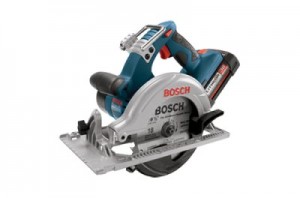 Circular saws are handy tools for both professional contractors and your average weekend warrior. There are many varieties of circular saws to choose from, however, which can be daunting the first time you go looking for one. If you’re in the market for a circular saw, your first call should be to Maxwell Supply in Tulsa. We’ll help evaluate your needs and find what you’re looking for. In the meantime, here are a few tips for buying the right circular saw.
Circular saws are handy tools for both professional contractors and your average weekend warrior. There are many varieties of circular saws to choose from, however, which can be daunting the first time you go looking for one. If you’re in the market for a circular saw, your first call should be to Maxwell Supply in Tulsa. We’ll help evaluate your needs and find what you’re looking for. In the meantime, here are a few tips for buying the right circular saw.
- Cut line indicator
Basically, this is the feature that lets you track where exactly your blade will be cutting. Without it, or if it’s inaccurate, you’ll have an extremely difficult time following your cut line. You’ll find the cut line indicator on the saw’s baseplate as two small notches. A good indicator allows you to cut on either the left or right of your line, depending on your preference.
- Blade visibility
There will be plenty of instances where the cut line indicator is out of sight. That’s when you’ll want a small window on the tool that allows you to see the blade and tell if it’s on line or not. If the saw is poorly designed, you’ll notice your view is obstructed by handles, guards, spindle locks, or by your hands while you grip it. For that reason, don’t be afraid to handle the saw before buying to see what the visibility is like.
- Baseplate
The first thing to consider about the baseplate of the saw is what material it’s made from. A baseplate needs to be completely flat across the length and the width and have a straight edge for riding a guide. If the baseplate is made from aluminum, there’s a good chance it will bend. Cast magnesium baseplates are usually tougher to bend, but will still break completely if you happen to drop your saw. Fiber-reinforced plastic baseplates are tough enough to withstand a drop and, if they’re thick enough, are also difficult to bend.
- Guard retraction
When the guard on your saw gets stuck during a cut, it will make you feel like throwing the saw across the work site. This happens most often with guards that have rough or sharp leading edges, which tend to get stuck when cutting in angles or on any type of wooden surface. Instead, look for a saw that features a large lobe above the leading edge of the guard.
These tips will help you eliminate a great deal of the available circular saws. For additional help narrowing down the exact tools and equipment you need, stop by and see us at Maxwell Supply in Tulsa.